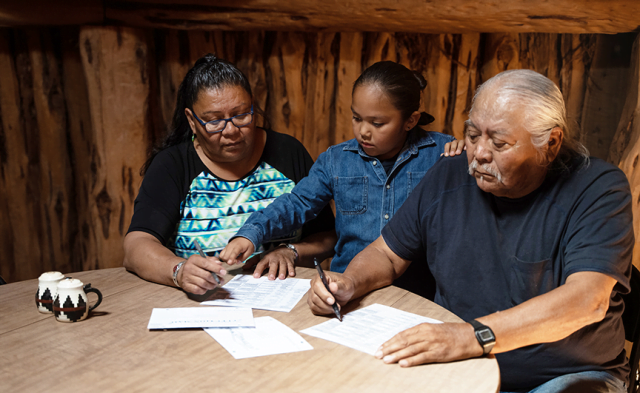
Lack of Broadband Impedes Native American Access to Aid
During the pandemic, the U.S. Social Security Administration leaned into providing more services and processing applications online. But that has furthered the agency’s disconnect with Native Americans living miles from its field offices in rural areas with poor internet access.
That’s one conclusion from a new study of the agency’s effectiveness in reaching Native American and Alaskan Native populations. The study included some analysis of data on these communities but was based largely on interviews with tribal leaders, community members, advocates, and the government staff who assist people applying for Social Security and other government benefits.
Although tribal communities have a higher poverty rate than non-Native populations, their members are somewhat less likely to be receiving Social Security’s various benefits, the researchers found. Interviews with experts who work in the community reveal they are often unaware of programs that would help them, like the Supplemental Security Income program, which provides cash benefits to people lacking substantial income and assets.
The researchers gave the agency credit for its ongoing efforts to improve services in tribal areas, and these efforts did not stop after COVID hit. When the Biden administration took office, federal departments also began consulting with tribal governments on a range of matters and prioritizing issues that affect their communities.
But Social Security’s growing reliance on the internet creates access issues, the study found.
Broadband connections that could link Native Americans to the agency over the internet are either spotty or nonexistent. Fewer than half of the households living on tribal lands have broadband access, compared with 72 percent nationwide. If they do use technology, it is often a cell phone, which isn’t well suited to filling out a lengthy application for government benefits.
In one indication of the low-tech methods used to reach Native populations, experts said paper flyers posted in community centers or at the post office or radio advertisements can be more effective than digital, internet-only announcements.
Another difficulty in getting information to tribal members is that it can be hard for people living in rural areas to travel to in-person appointments at the agency’s field offices. Nearly 85 percent of Native Americans are far from the offices because they live either on tribal lands or in small rural towns.
In limited cases, meetings can be arranged using the video conferencing equipment Social Security has set up in some tribal government buildings, community centers, and Indian Health Services buildings in Arizona and other states with large Native populations. Social Security also has small offices with limited staff – called resident stations – in nursing homes, community centers, and other facilities in remote areas.
Cultural issues present another obstacle to tribal communities. Despite federal efforts to reach them, the researchers said Native Americans’ historic distrust of the government runs deep. “For them, their experience is that they have to fight for everything,” the researchers said.
The goal is to get the communities the federal benefits they have earned and are entitled to. The danger is that some individuals who encounter numerous obstacles will give up.
To read this study by Barbara Butrica, Stipica Mudrazija, and Jonathan Schwabish, see “Understanding the Characteristics and Needs of Tribal Community Members for Social Security Delivery.”
The research reported herein was derived in whole or in part from research activities performed pursuant to a grant from the U.S. Social Security Administration (SSA) funded as part of the Retirement and Disability Research Consortium. The opinions and conclusions expressed are solely those of the authors and do not represent the opinions or policy of SSA, any agency of the federal government, or Boston College. Neither the United States Government nor any agency thereof, nor any of their employees, make any warranty, express or implied, or assumes any legal liability or responsibility for the accuracy, completeness, or usefulness of the contents of this report. Reference herein to any specific commercial product, process or service by trade name, trademark, manufacturer, or otherwise does not necessarily constitute or imply endorsement, recommendation or favoring by the United States Government or any agency thereof.
Comments are closed.







It woudn’t matter so much if the Barlesbys at the SSA call center answered the phone.